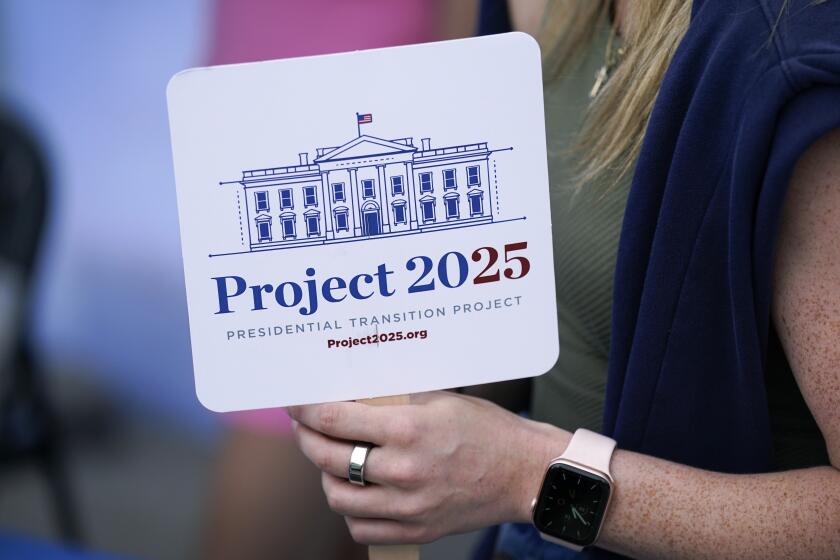Access to the Legislative Process
- Share via
I found Robert Conot’s article (Opinion, Nov. 5) on access to the legislative process provocative, interesting, and insightful. I particularly liked the title, “One Day for Voters, Everyday for Lobbyists.”
Conot says that lobbyists dominate the legislative process because of proximity. They are in touch with state and federal legislators daily, an influence that voters can’t match. The only touch the voters have is on election day and it is diluted by the limited range of choices and by the number of races that are not competitive.
Proximity may give lobbyists an edge but it is hardly decisive. Two other factors go far to explain their domination: (1) the fund-raising that candidates must do and (2) the safe districts that political parties create for themselves.
When you have to raise a lot of money to run for office, obviously that makes you dependent on interest groups. There are two contexts in which this is true.
There are no limits on spending in state legislative races. The result has been exploding campaign costs with the Speaker of the Assembly bankrolling many candidates.
The other context is the U.S. Senate. You cannot win a statewide primary and general election without building a huge war chest. The act of doing so obligates you. We can limit the “buy in” of interest groups by limiting spending and publicly financing general elections.
Interest group domination of the House of Representatives is just as pervasive as it is of the Senate, however a different set of circumstances obtains there. It is not that they must raise so much money. It is that interest groups know who will win. When safe seats return so many to office, it is easy for interest groups to know where to put their money. With greater turnover, it would be more difficult.
The circumstance that creates so many safe seats is gerrymandering (districting by the political parties). We need to eradicate it once and for all; however, that won’t be easy. All incumbents, Republicans and Democrats, want to keep the system that elected them. Moreover, the reapportionment power is in the hands of the Legislature. Short of mending the Constitution, we can’t change that.
However, there is a remedy. That is for the Supreme Court to tighten the rules with regard to reapportionment. “One man, one vote,” is not enough. It prevents malapportionment, but it doesn’t stop gerrymandering. The criterion should be that districts be equally populated and that boundaries be as compact as possible.
ERIC STEEL
Oakland
More to Read
Get the L.A. Times Politics newsletter
Deeply reported insights into legislation, politics and policy from Sacramento, Washington and beyond. In your inbox twice per week.
You may occasionally receive promotional content from the Los Angeles Times.










